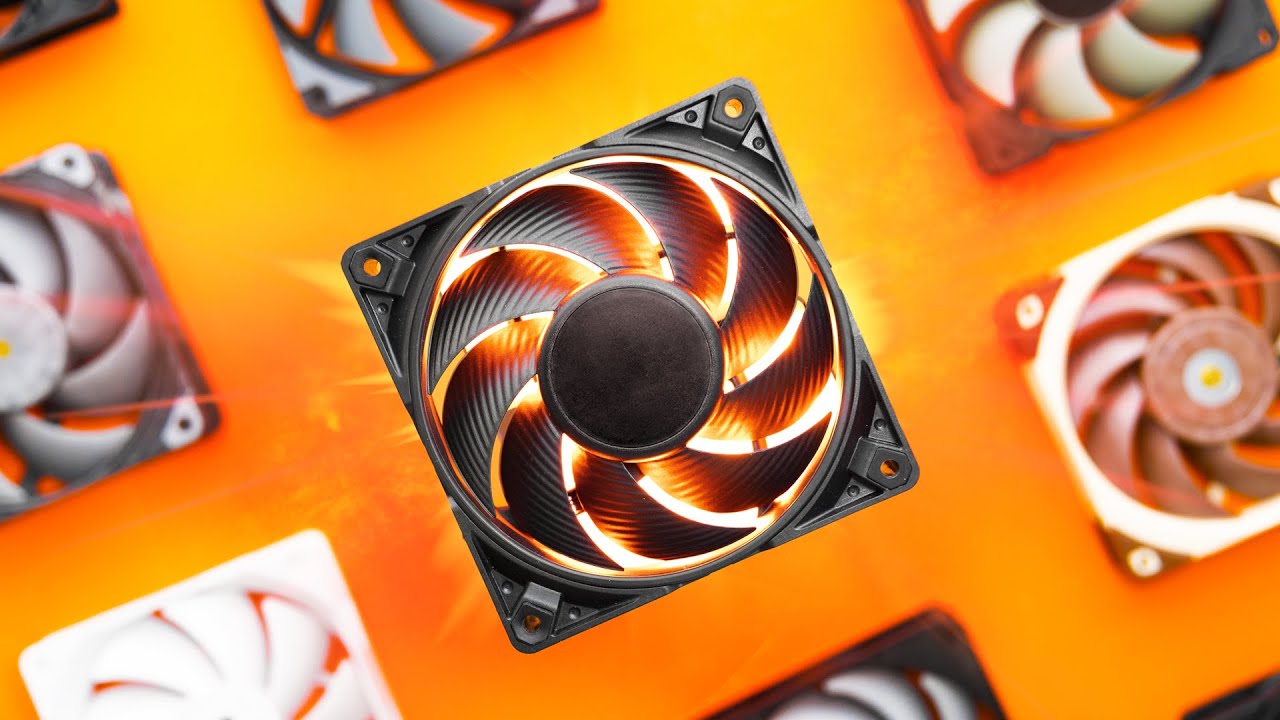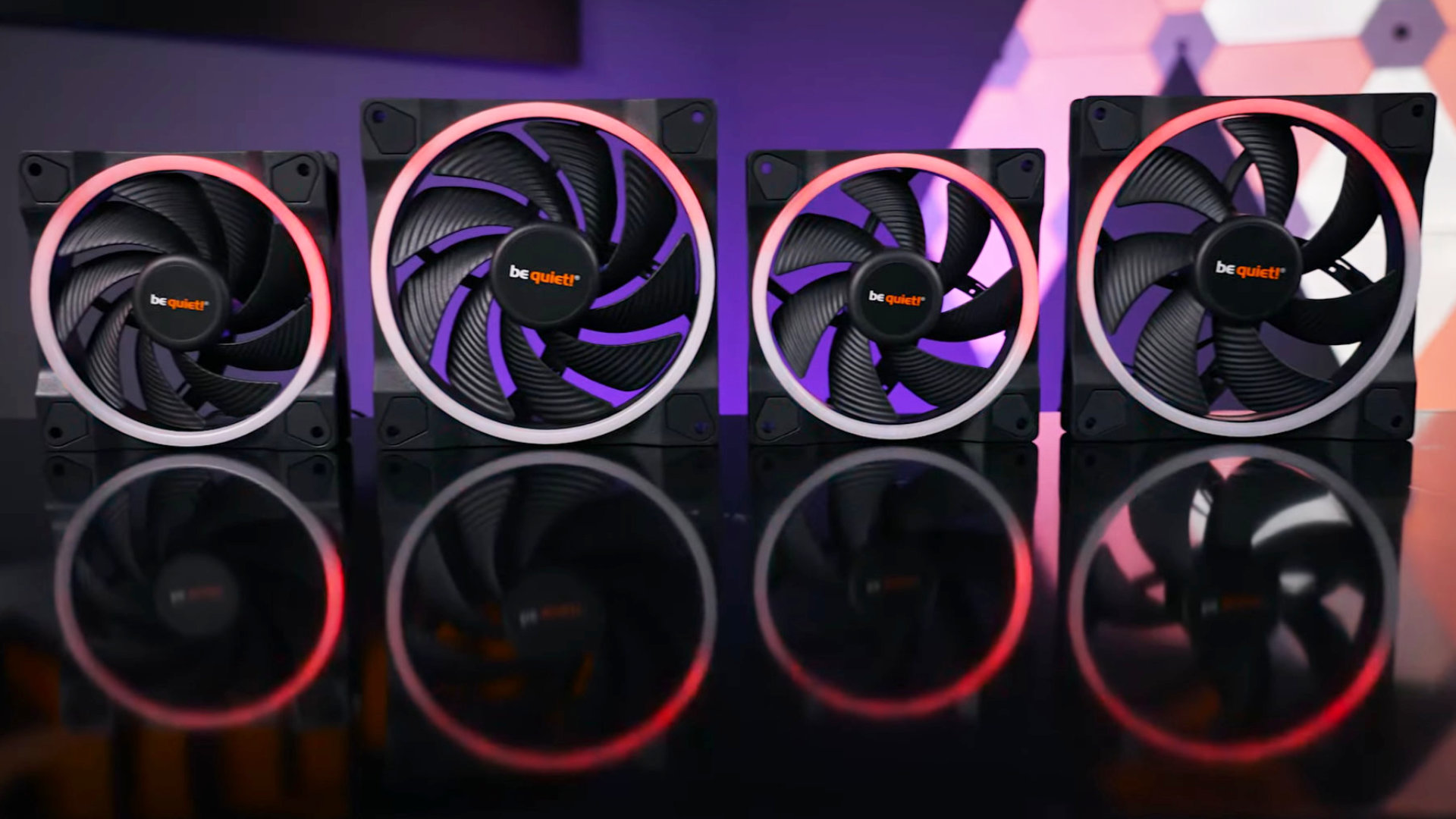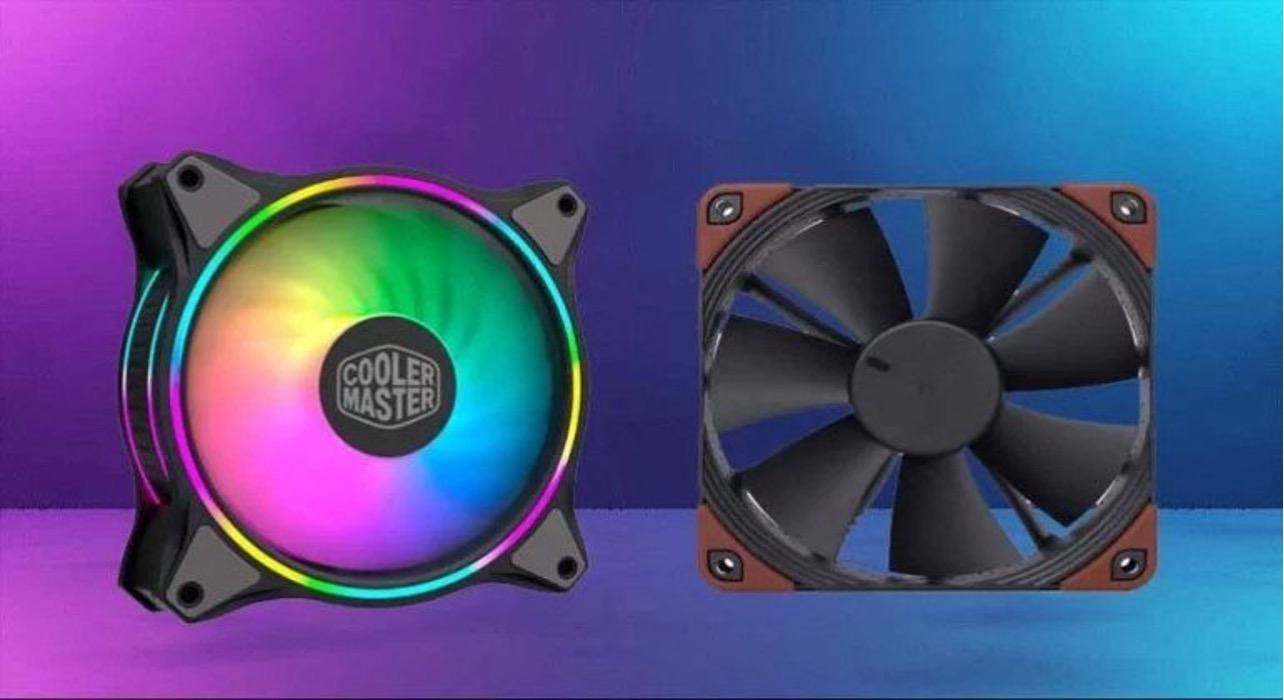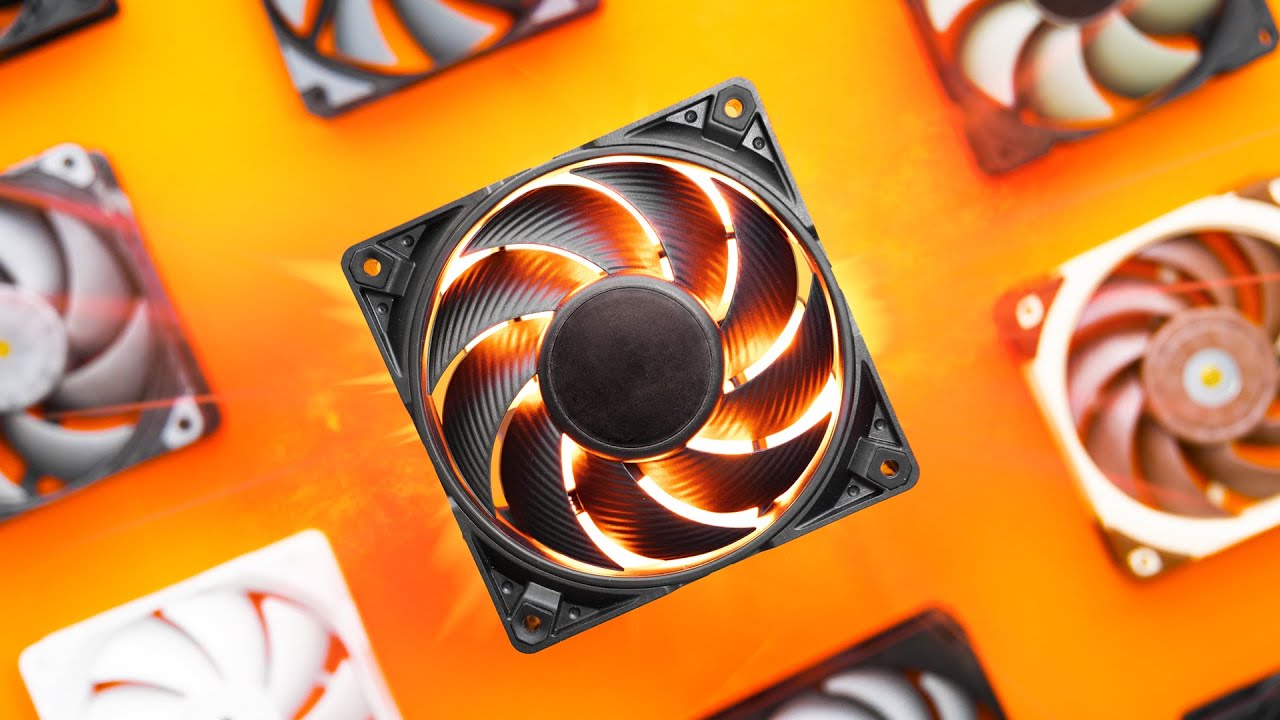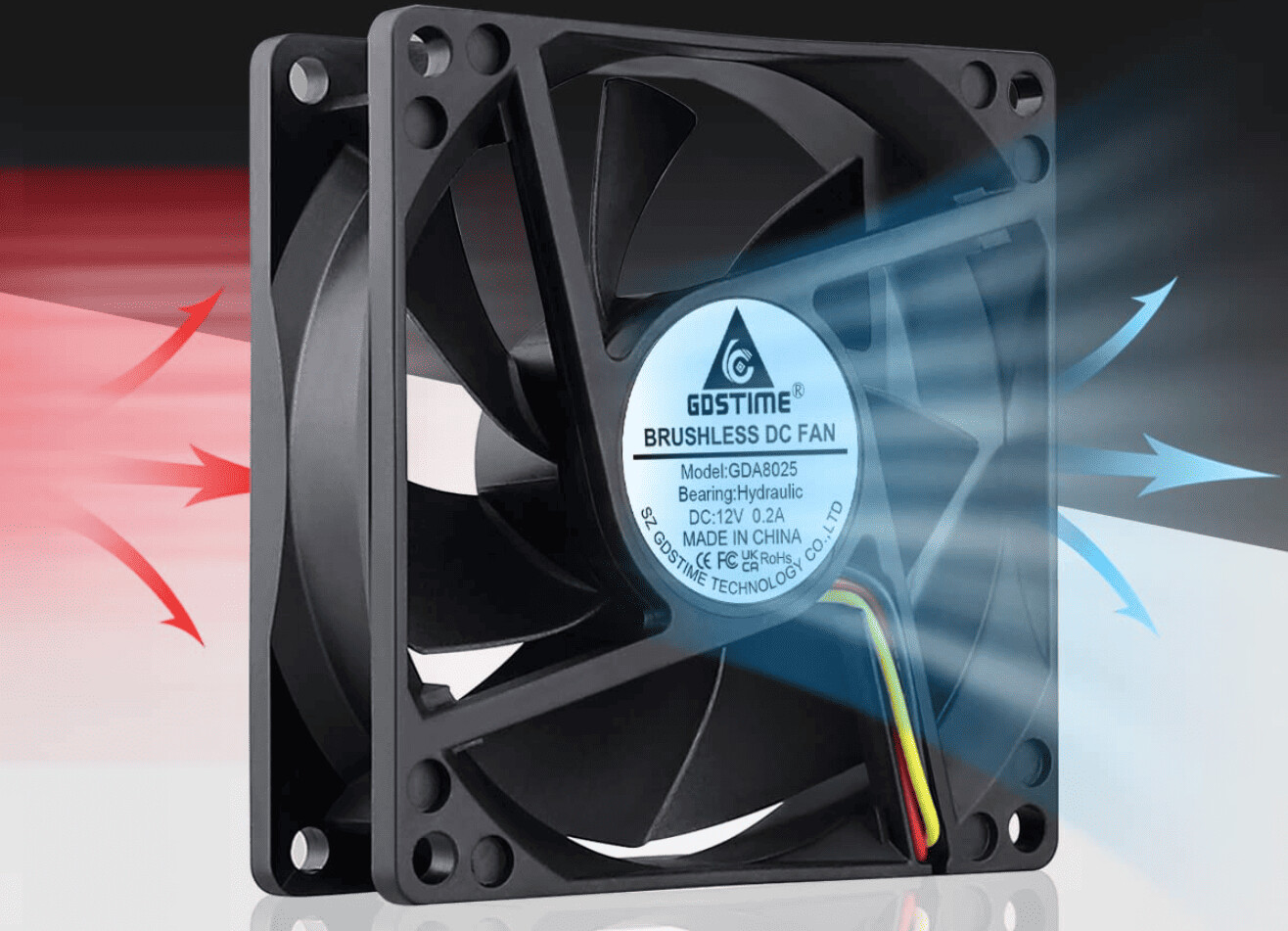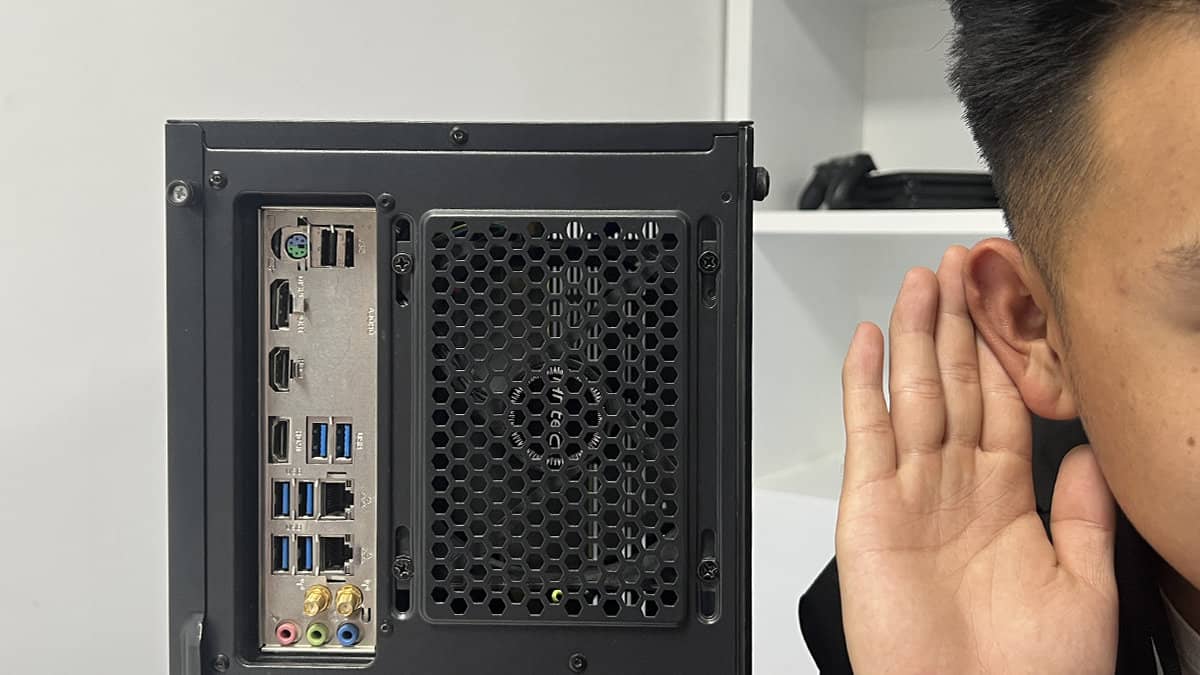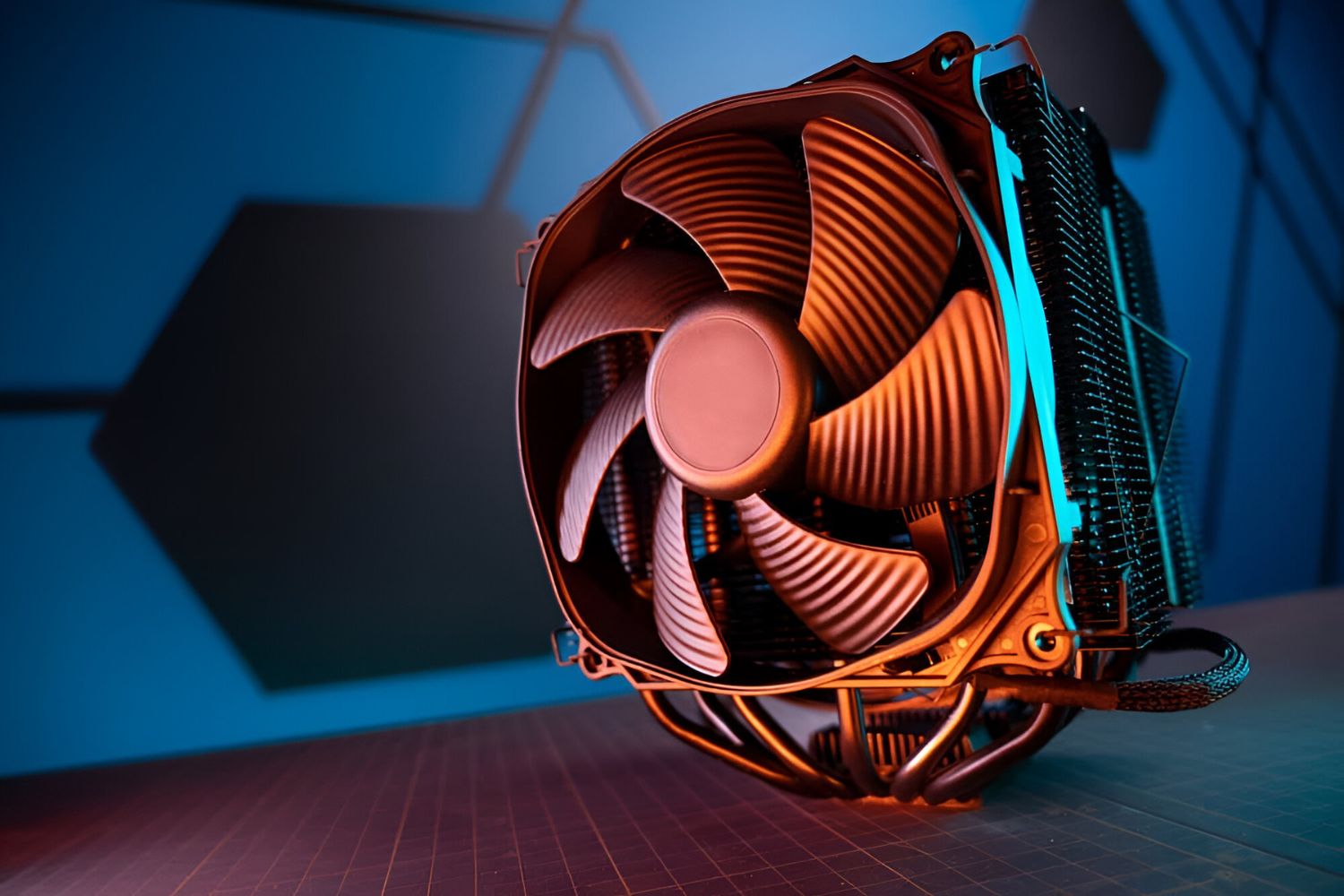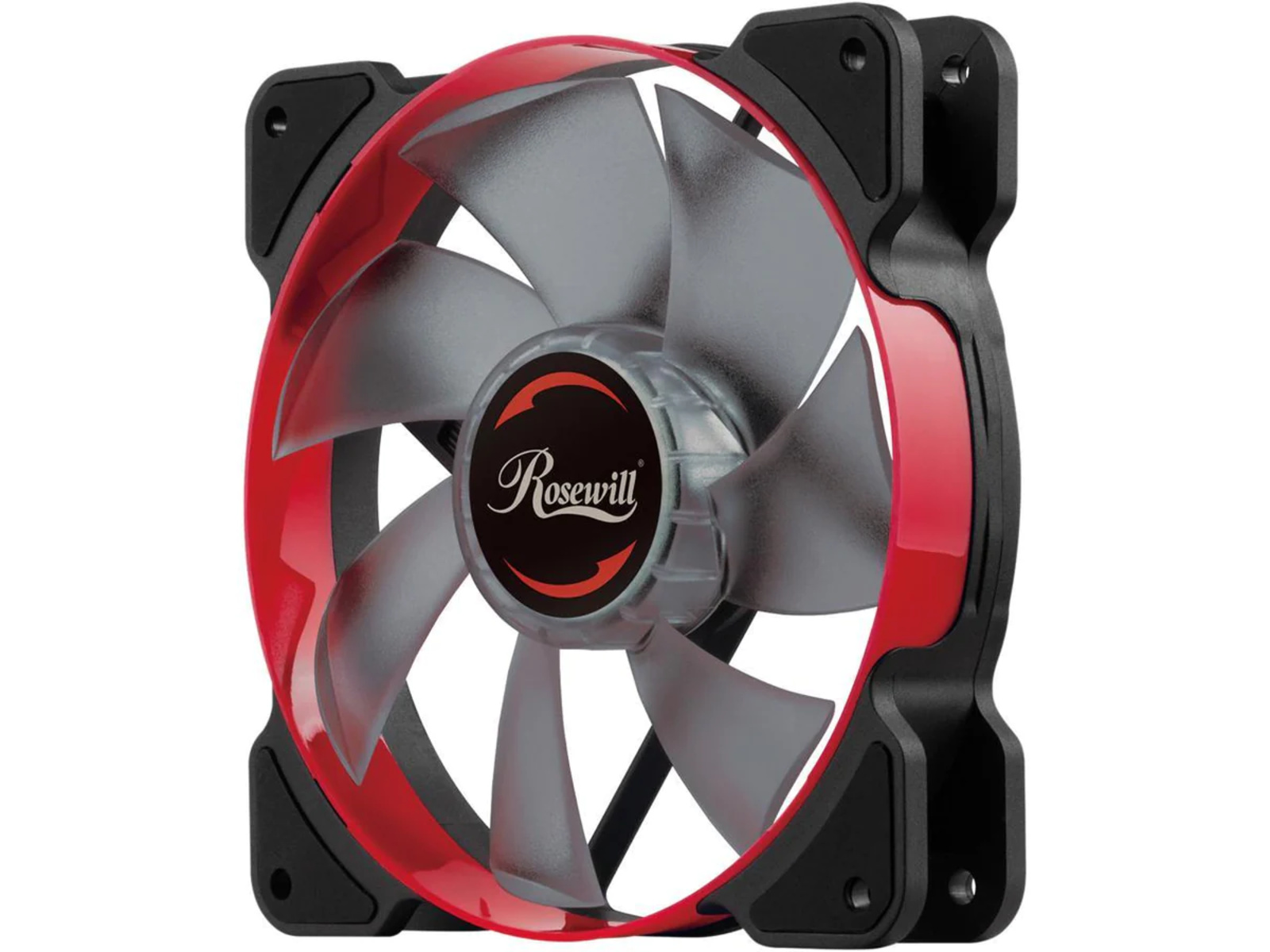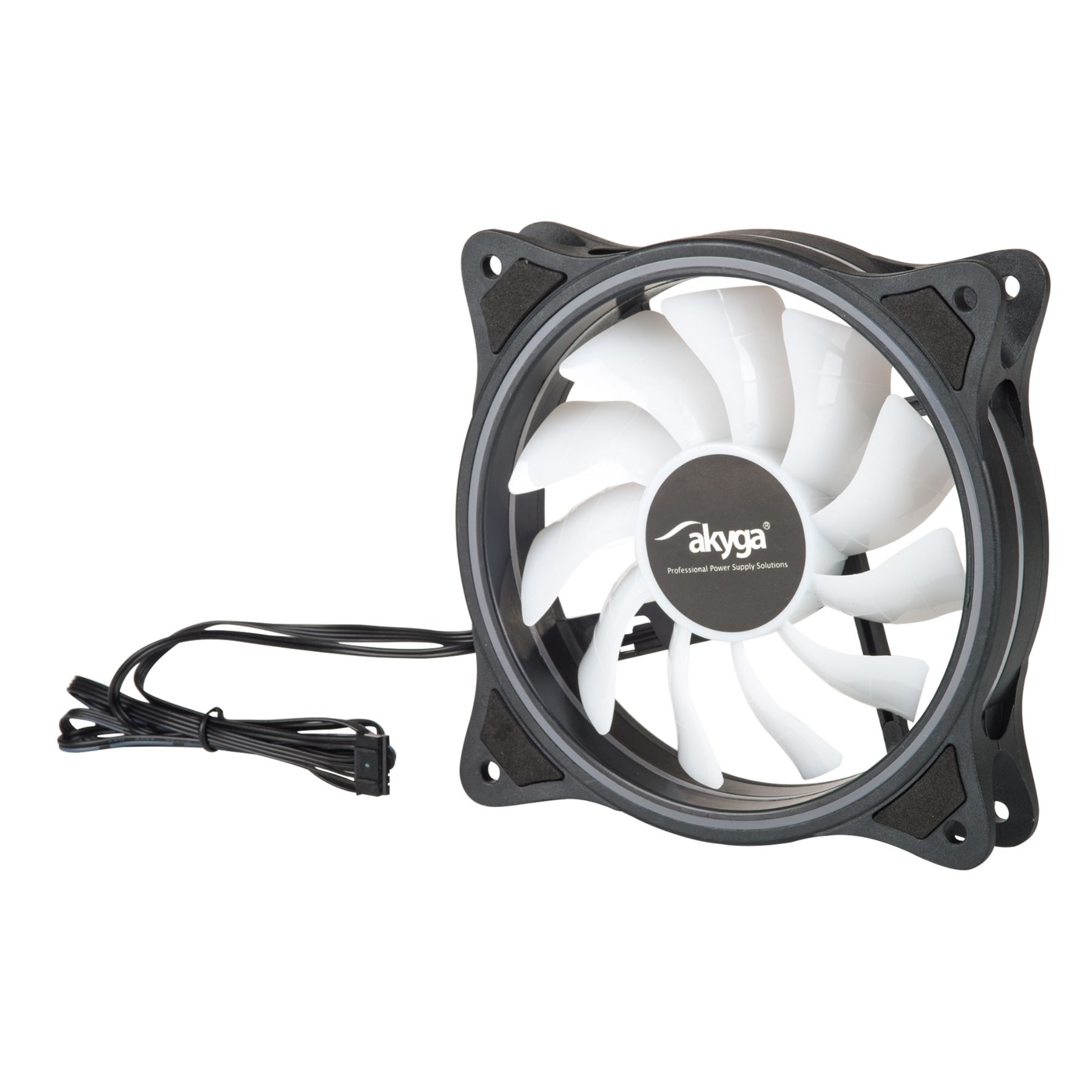Introduction
When it comes to keeping your computer cool, case fans play a vital role. These small but powerful devices help to circulate air inside the computer case, preventing overheating and ensuring optimum performance. However, not all case fans are created equal, and one important factor to consider is the CFM.
CFM, or Cubic Feet per Minute, is a measurement used to determine the airflow capacity of a case fan. It indicates the volume of air that the fan can move in one minute. Understanding CFM is crucial for selecting the right case fan for your computer setup, as insufficient airflow can lead to serious consequences such as hardware failure or reduced lifespan.
In this article, we will explore what exactly CFM is, why it is important for case fans, how it is measured, and other factors that can affect CFM. By the end, you will have a clear understanding of CFM and be able to make informed decisions when choosing case fans for your computer system.
What is CFM?
CFM stands for Cubic Feet per Minute, which is a unit of measurement used to quantify the volume of air flow produced by a fan. It represents the amount of air that can be moved in one minute. CFM is an essential specification to consider when selecting case fans, as it directly impacts the cooling performance of the computer system.
CFM is a standard measurement used across various industries, including HVAC (Heating, Ventilation, and Air Conditioning) and computer cooling. In the context of case fans, CFM indicates how effectively the fan can circulate air inside the computer case, dissipating heat generated by the CPU, GPU, and other components.
It’s important to note that CFM is not the same as fan speed. Fan speed, typically measured in rotations per minute (RPM), refers to how fast the fan blades spin. While fan speed does affect CFM, it is not the sole determinant. The design of the fan blades, the motor power, and other factors also play a significant role in achieving higher CFM.
CFM is crucial for maintaining optimal temperatures inside the computer case. Insufficient airflow can result in heat buildup, causing the components to run at higher temperatures, which can lead to decreased performance or even system failure. On the other hand, excessive airflow can create unnecessary noise and turbulence inside the case. Therefore, understanding CFM and finding the right balance is key.
Now that we have a basic understanding of CFM, let’s explore why it is important specifically for case fans in the next section.
Why is CFM important for case fans?
CFM is an essential factor to consider when selecting case fans because it directly affects the cooling efficiency of the computer system. The primary function of case fans is to circulate air inside the computer case, dissipating heat generated by the components. Adequate airflow is crucial for maintaining optimal operating temperatures and preventing hardware failure.
When the components inside the computer case generate heat, it needs to be effectively removed to prevent overheating. Insufficient airflow can result in stagnant hot air, causing the temperature to rise and potentially damaging the components. In extreme cases, this can lead to thermal throttling or even component failure.
By having an understanding of CFM, you can choose case fans that provide sufficient airflow to keep your computer cool. Higher CFM values indicate a greater amount of air being moved by the fans, leading to more effective heat dissipation. This is particularly important if you have high-performance components or if you overclock your CPU or GPU.
Another factor to consider when it comes to CFM is the overall fan configuration in your computer case. Different areas of the case may require different levels of airflow. For example, the front intake fans should provide enough airflow to bring in cool air while the rear or top exhaust fans should have enough CFM to efficiently expel hot air from the case.
It’s crucial to strike a balance between noise levels and CFM when selecting case fans. Typically, fans with higher CFM tend to generate more noise due to the increased airflow resistance and fan speed. However, advancements in fan design and technology have led to the development of quieter fans with higher CFM ratings. Consider your noise tolerance levels and choose fans that meet your cooling needs without causing excessive noise.
In summary, CFM is of utmost importance for case fans as it directly correlates to the cooling efficiency of the computer system. By selecting fans with appropriate CFM ratings, you can ensure effective heat dissipation, prevent overheating, and maintain optimal performance and longevity for your components.
How is CFM measured?
CFM, or Cubic Feet per Minute, is a standard measurement used to quantify the volume of airflow produced by a fan. The CFM value indicates the amount of air that the fan can move in one minute. It is a crucial specification to consider when selecting case fans to ensure effective cooling of your computer system.
CFM is measured using specialized equipment called anemometers. Anemometers are devices designed to measure air velocity or airflow. There are different types of anemometers available, including hot-wire anemometers, vane anemometers, and pitot tubes.
Hot-wire anemometers are commonly used for CFM measurements. They consist of a very thin wire that is heated up. As the air flows past the wire, the cooling effect of the air alters the wire’s electrical resistance, which is then measured. The rate at which the resistance changes allows for the calculation of airflow velocities and ultimately the CFM value.
Using an anemometer, the CFM measurement process involves placing the fan in a controlled environment with minimal air disturbance. The anemometer is positioned in front of the fan at a specified distance, and the airflow generated by the fan is directed towards the anemometer.
The anemometer records the airflow velocity in feet per minute. To calculate CFM, the velocity value is multiplied by the cross-sectional area of the fan’s outlet. The cross-sectional area is determined by multiplying the height and width of the fan’s outlet. This calculation provides the volumetric flow rate in cubic feet per minute.
Manufacturers often provide CFM values for their case fans in product specifications, allowing users to easily compare and select the most suitable fan for their needs. It’s important to note that the actual CFM performance of a fan may vary based on factors such as the installation method, fan placement, and system configuration.
By understanding how CFM is measured, you can make informed decisions when selecting case fans for your computer system. Consider the CFM ratings provided by manufacturers and match them with the specific airflow requirements of your computer case to ensure proper cooling and thermal management of your components.
Factors affecting CFM
Several factors can affect the CFM (Cubic Feet per Minute) rating of a case fan. Understanding these factors is important to select fans that can provide the desired airflow for effective cooling of your computer system. Let’s explore some of the key factors influencing CFM:
- Fan Size: The size of the fan plays a significant role in determining the CFM rating. Generally, larger fans tend to have a higher CFM as they can move a larger volume of air. Common fan sizes for desktop computers include 120mm and 140mm, while smaller form factors may use 80mm or 92mm fans.
- Fan Speed: Fan speed, typically measured in rotations per minute (RPM), is another important factor that impacts CFM. In general, higher fan speeds result in higher CFM ratings. However, it’s essential to strike a balance between airflow performance and noise levels, as faster-spinning fans can generate more noise.
- Fan Design: The design of the fan blades greatly influences the CFM rating. Fans with angled or curved blades are typically more efficient in moving air and can achieve higher CFM values. Additionally, fan designs that reduce turbulence and minimize noise production can contribute to better CFM performance.
- Fan Motor Power: The power of the fan motor can influence CFM. Fans with more powerful motors can generate higher airflow and achieve higher CFM ratings. However, it’s important to consider power consumption and noise levels as well, particularly for systems requiring quiet operation.
- Airflow Restrictions: Any obstructions or restrictions in the airflow path can significantly affect CFM. Factors such as dust buildup, cable management, and improper fan placement can impede the flow of air, reducing the actual CFM performance. Ensuring a clean and well-organized system can help optimize airflow.
- Pressure Control: Some case fans are designed with specific pressure control features such as static pressure or airflow pressure optimization. These fans are better suited for scenarios where there are high airflow restrictions, such as using liquid cooling radiators or dense heatsinks. These features can impact the CFM rating based on the specific application.
- Environmental Conditions: Environmental factors like temperature and altitude can impact the CFM rating of fans. Higher temperatures can decrease the density of the air, which affects the fan’s ability to move the expected amount of air. Similarly, at higher altitudes, where the air density is lower, fans may experience reduced CFM performance.
Considering these factors when selecting case fans ensures that you choose fans that can effectively meet your airflow requirements and provide adequate cooling for your system components.
Choosing the right CFM for your case
Choosing the right CFM (Cubic Feet per Minute) for your case is crucial to ensure proper cooling and thermal management of your computer system. The right CFM rating will depend on several factors, including the components inside your case, the case design, and your cooling requirements. Here are some tips to help you make the best decision:
- Assess Your Cooling Needs: Consider the types of components in your case, including the CPU, GPU, and any additional cooling components like radiators or heatsinks. High-performance components or systems that are overclocked will generate more heat and require higher CFM fans to maintain proper cooling. Determine the specific airflow requirements for effective heat dissipation.
- Evaluate Your Case Design and Airflow: Different cases have varying airflow characteristics. Some cases may have good airflow designs with sufficient ventilation and cable management options, allowing for efficient airflow. Others may have restrictions or poor airflow due to limited fan mounting locations or cluttered interiors. Consider your case’s design and look for opportunities to optimize airflow with strategic fan placement.
- Calculate Airflow Requirements: Calculate the approximate CFM needed based on the airflow requirements of your components and the case’s thermal characteristics. You can find guidelines or recommended CFM ratings from component manufacturers or case manufacturers. Keep in mind that these recommendations are generalized, and actual airflow requirements may differ depending on your specific setup.
- Budget and Noise Concerns: Consider your budget and noise tolerance when selecting case fans with the appropriate CFM rating. Higher CFM fans tend to be more expensive and can generate more noise due to increased fan speeds and airflow resistance. Look for fans that strike a balance between CFM performance, noise levels, and cost.
- Consider Fan Configurations: Evaluate the fan configuration options available in your case. Some cases may have multiple mounting locations for fans, including front, rear, top, and side panels. Determine the optimal fan configuration based on your case’s airflow dynamics and the components’ cooling requirements.
- Manufacturer Specifications: Pay attention to the CFM ratings provided by manufacturers when selecting case fans. Ensure that the fans’ CFM ratings match or exceed your calculated requirements. However, keep in mind that actual CFM performance may vary due to installation methods and system configurations.
- Reviews and Recommendations: Research and read reviews or seek recommendations from trusted sources or online communities to get insights into the performance and reliability of specific case fans. Feedback from users who have experience with different fan models can help you make an informed decision.
By considering these factors and guidelines, you can select case fans with the appropriate CFM rating that will effectively cool your computer system, prevent overheating, and maintain optimal performance and longevity for your components.
Conclusion
Understanding CFM (Cubic Feet per Minute) is crucial when it comes to selecting case fans for your computer system. CFM measures the airflow capacity of a fan and directly affects the cooling performance of your components. Choosing the right CFM rating ensures efficient heat dissipation, prevents overheating, and contributes to optimal performance and longevity of your system.
In this article, we explored what CFM is and why it is important for case fans. We learned that CFM represents the volume of air moved by a fan in one minute and that higher CFM ratings result in greater airflow. We also discussed the factors that influence CFM, including fan size, fan speed, fan design, and airflow restrictions.
When choosing the right CFM for your case, it’s essential to assess your cooling needs, evaluate your case’s design and airflow characteristics, calculate your airflow requirements, consider your budget and noise concerns, and review manufacturer specifications and user recommendations. By considering these factors, you can select case fans that provide adequate airflow to maintain proper temperatures within your system.
Remember, maintaining proper cooling is crucial for optimal system performance and longevity. Insufficient airflow can lead to overheating and potential component failure, while excessive airflow may cause unnecessary noise. Striking the right balance by selecting case fans with appropriate CFM ratings is key.
In summary, understanding CFM and its significance in case fans allows you to make informed decisions when it comes to selecting the right cooling solution for your computer system. By prioritizing CFM and considering other relevant factors, you can ensure effective heat dissipation, prevent overheating, and create an optimal environment for your components to perform at their best.







